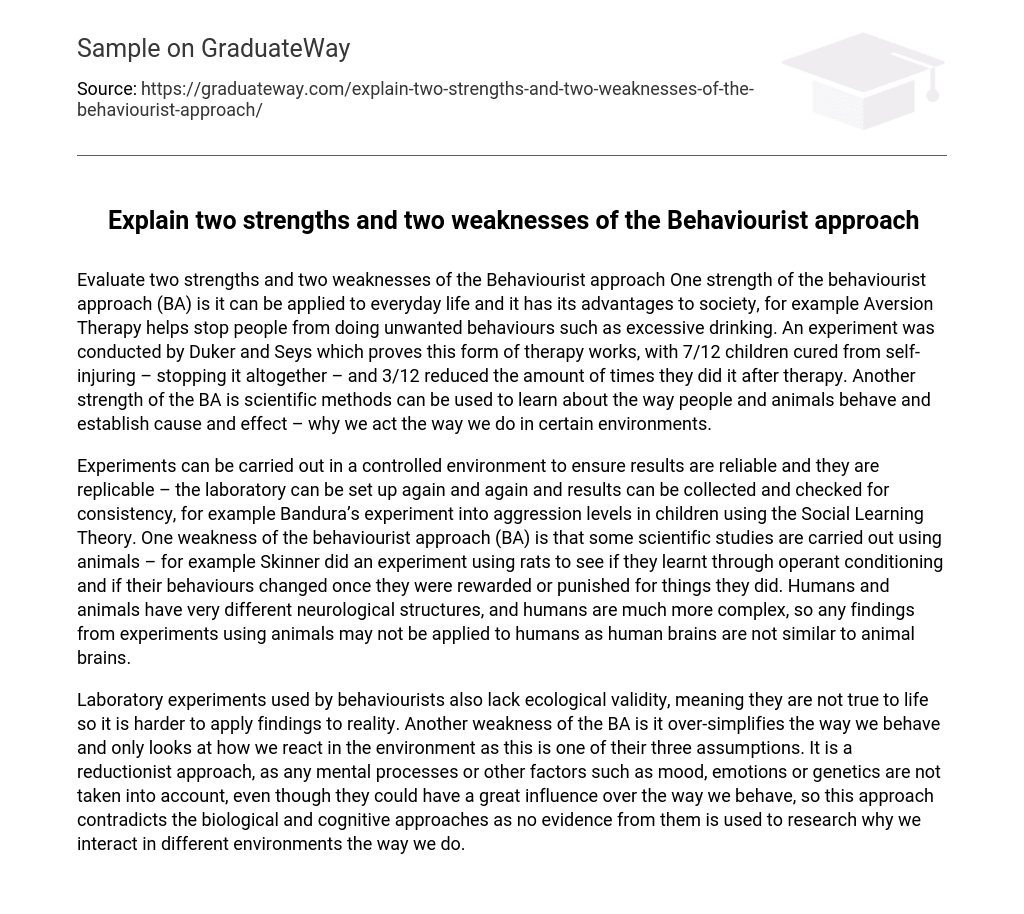Evaluate two strengths and two weaknesses of the Behaviourist approach One strength of the behaviourist approach (BA) is it can be applied to everyday life and it has its advantages to society, for example Aversion Therapy helps stop people from doing unwanted behaviours such as excessive drinking. An experiment was conducted by Duker and Seys which proves this form of therapy works, with 7/12 children cured from self-injuring – stopping it altogether – and 3/12 reduced the amount of times they did it after therapy. Another strength of the BA is scientific methods can be used to learn about the way people and animals behave and establish cause and effect – why we act the way we do in certain environments.
Experiments can be carried out in a controlled environment to ensure results are reliable and they are replicable – the laboratory can be set up again and again and results can be collected and checked for consistency, for example Bandura’s experiment into aggression levels in children using the Social Learning Theory. One weakness of the behaviourist approach (BA) is that some scientific studies are carried out using animals – for example Skinner did an experiment using rats to see if they learnt through operant conditioning and if their behaviours changed once they were rewarded or punished for things they did. Humans and animals have very different neurological structures, and humans are much more complex, so any findings from experiments using animals may not be applied to humans as human brains are not similar to animal brains.
Laboratory experiments used by behaviourists also lack ecological validity, meaning they are not true to life so it is harder to apply findings to reality. Another weakness of the BA is it over-simplifies the way we behave and only looks at how we react in the environment as this is one of their three assumptions. It is a reductionist approach, as any mental processes or other factors such as mood, emotions or genetics are not taken into account, even though they could have a great influence over the way we behave, so this approach contradicts the biological and cognitive approaches as no evidence from them is used to research why we interact in different environments the way we do.





